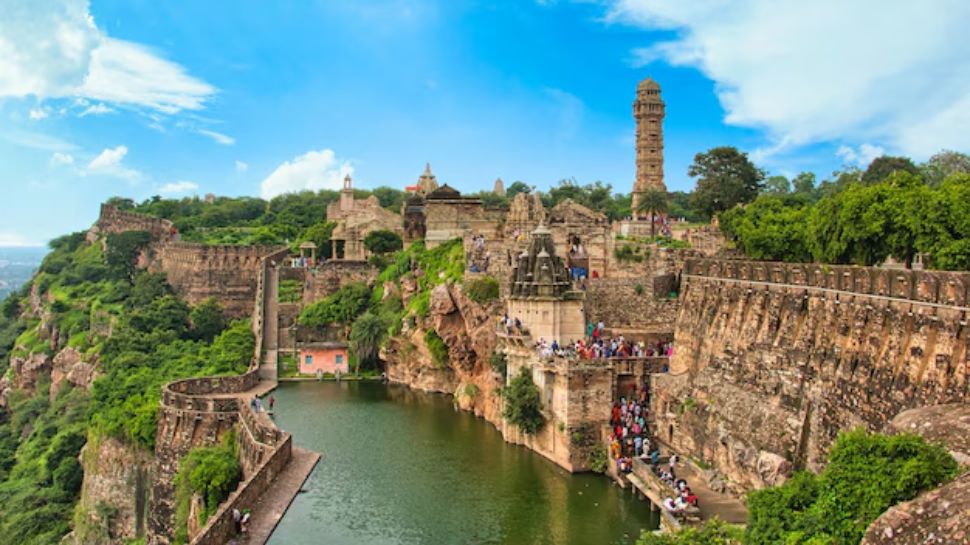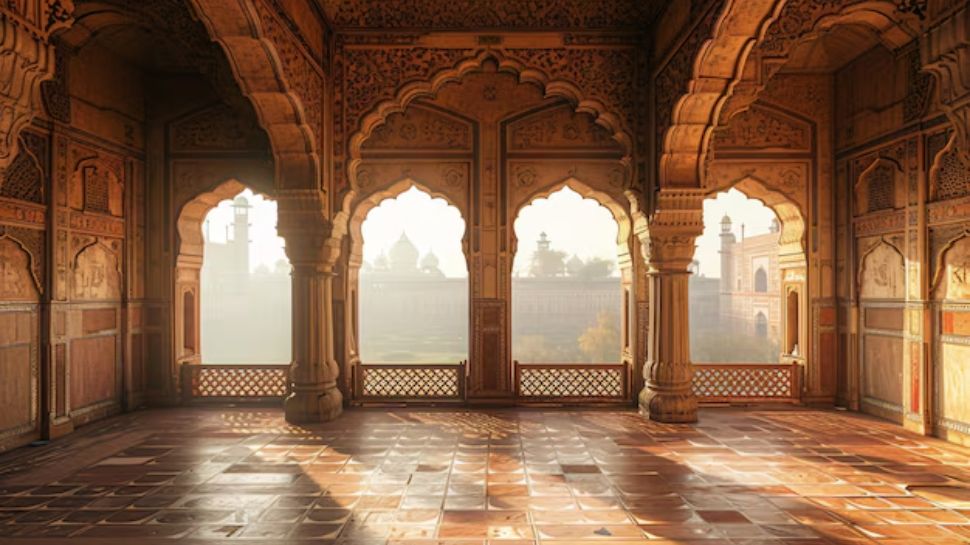Discover The 6 Famous UNESCO Hill Forts Of Rajasthan And Their Rich History
Rajasthan's UNESCO hill forts are stunning examples of ancient architecture and military brilliance, offering a glimpse into the state's rich history.

Rajasthan, the land of kings, is renowned for its majestic forts and palaces, each steeped in history, culture, and grandeur. Among these, the UNESCO-listed hill forts of Rajasthan stand as some of the most iconic and breathtaking structures, showcasing the military prowess and architectural brilliance of ancient India. These forts, perched on rugged hills, have witnessed centuries of history, battles, and royal rule. Let’s explore the six famous UNESCO Hill Forts of Rajasthan and delve into their rich history.
Chittorgarh Fort
)
Located in the southern part of Rajasthan, Chittorgarh Fort is the largest fort in India and a UNESCO World Heritage site. Known for its stunning architecture and historical significance, it was built in the 7th century by the Maurya rulers and later expanded by the Mewar dynasty.
The fort stands on a hill 1,180 feet above sea level and houses several remarkable structures such as the Vijay Stambh (Victory Tower), Kirti Stambh, and Padmini Palace. The fort has witnessed several battles, including the famous siege by the Mughal emperor Akbar. The fort’s history is deeply intertwined with the sacrifice of Rani Padmini, who chose Jauhar (self-immolation) over falling into enemy hands.
Key Highlights: Vijay Stambh: A towering structure dedicated to the victory of Maharana Kumbha over the Sultan of Gujarat. Rani Padmini's Palace: A symbol of Rajput bravery and valor.
Kumbhalgarh Fort
)
Nestled in the Aravalli Range, Kumbhalgarh Fort is another UNESCO World Heritage site and a gem of Rajput architecture. It was built in the 15th century by Rana Kumbha, the king of Mewar, and stands as a testament to the strategic genius of Rajput rulers.
Kumbhalgarh is famous for its massive fortification wall, which is the second-longest continuous wall in the world, after the Great Wall of China. The fort has a total of seven massive gates and more than 360 temples within its premises. Its strategic location on a high hill provides panoramic views of the surrounding landscapes.
Key Highlights: Kumbhalgarh Fort Wall: Spanning over 36 kilometers, it's one of the longest walls in the world. A beautiful collection of temples: There are many temples dedicated to Hindu gods and goddesses, as well as Jain temples.
Gagron Fort
)
Located in the Jhalawar district of Rajasthan, Gagron Fort is a unique hill fort that was strategically built on a confluence of two rivers, Ahu and Kali Sindh. The fort has an extraordinary location and is surrounded by water, which adds to its defensive strength. It was originally constructed by the Gahlot dynasty and later expanded under the Mewar rulers.
Gagron Fort is known for its history of being one of the most impregnable forts in Rajasthan. The fort has witnessed many royal battles and is especially famous for its architecture, where water played an important role in its defense.
Key Highlights: Water Defenses: The fort is surrounded by rivers, making it highly defensible. Breathtaking Views: The fort offers stunning views of the surrounding forest and hills.
Amber Fort
)
Amber Fort, also known as Amer Fort, is situated on a hilltop overlooking the Maota Lake, just outside Jaipur. Built in the late 16th century by Raja Man Singh, Amber Fort is a stunning blend of Hindu and Mughal architectural styles. It is one of the most popular forts in Rajasthan and is known for its beauty, grandeur, and historical significance.
Amber Fort's Sheesh Mahal (Mirror Palace) and Diwan-i-Aam (Hall of Public Audience) are architectural masterpieces. The fort is famous for its intricate carvings, beautiful frescoes, and stunning courtyards. Amber Fort, along with the surrounding structures, gives visitors a glimpse into the royal lifestyle of Rajput kings.
Key Highlights: Sheesh Mahal: A palace made entirely of mirrors, which reflects light beautifully. Jaleb Chowk: The entrance courtyard where royal processions would be held.
Ranthambore Fort
)
Located inside Ranthambore National Park, Ranthambore Fort is a 10th-century fort that stands as a reminder of Rajasthan's medieval past. Originally built by the Chauhan kings, the fort was expanded and fortified by the Rajputs and later came under the rule of the Mughals.
Ranthambore Fort offers stunning views of the surrounding Ranthambore National Park, which is famous for its tigers. The fort itself houses many temples, including the Ganesh Temple, and ruins of palaces and other royal structures. This fort is a unique combination of history and wildlife, making it a must-visit for nature and history lovers alike.
Key Highlights: Ranthambore National Park: A UNESCO biosphere reserve famous for its Bengal tigers. Ganesh Temple: An ancient temple dedicated to Lord Ganesha.
Jaisalmer Fort
)
Known as Sonar Quila or the Golden Fort, Jaisalmer Fort is one of the largest living forts in the world. Located in the heart of the Thar Desert, it was built in the 12th century by Raja Jaisal. The fort stands on a hill of yellow sandstone, which gives it its golden color, making it a stunning sight, especially at sunset.
Jaisalmer Fort is unique because it houses a full-fledged town with homes, shops, temples, and even hotels inside the fort. The fort’s architecture is a blend of Rajput and Islamic styles, with intricate carvings and delicate stonework. The fort has witnessed numerous battles and has stood the test of time as one of Rajasthan's most iconic landmarks.
Key Highlights: Living Fort: The fort still houses people, making it a vibrant living piece of history. Jain Temples: Ancient temples within the fort, known for their delicate carvings and architecture.
)
The six UNESCO hill forts of Rajasthan are not only architectural marvels but also significant historical monuments that tell the stories of bravery, royal lineage, and timeless beauty. These forts are an integral part of Rajasthan's rich heritage, offering visitors a glimpse into the glorious past of the region. Whether you are a history enthusiast, a lover of architecture, or simply someone looking to explore the cultural treasures of India, these forts are must-visit destinations that will leave you awe-struck by their grandeur and historical significance.
Trending Photos



)
)
)
)
)
